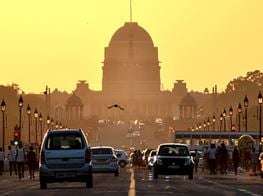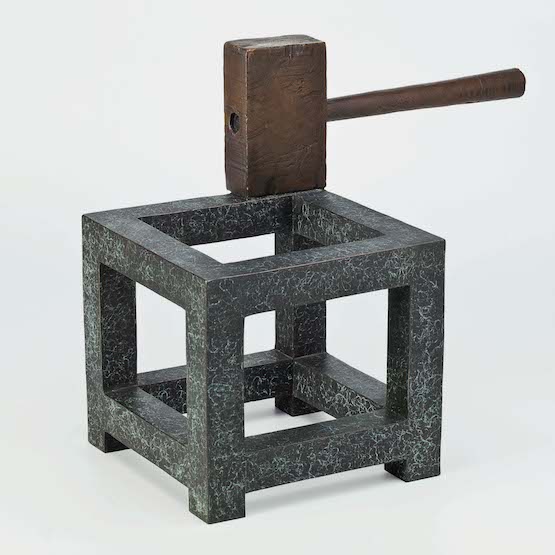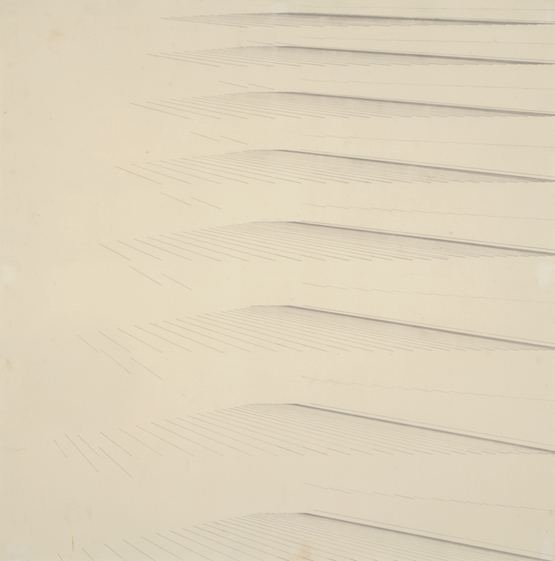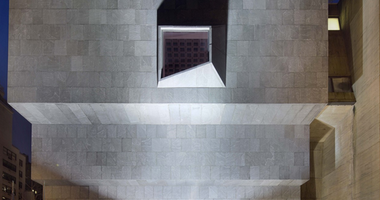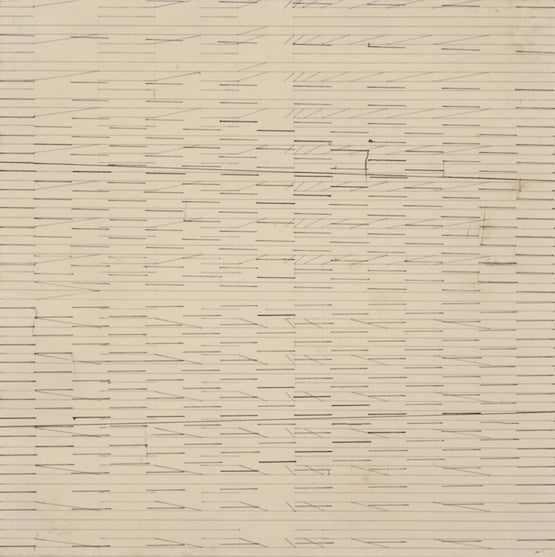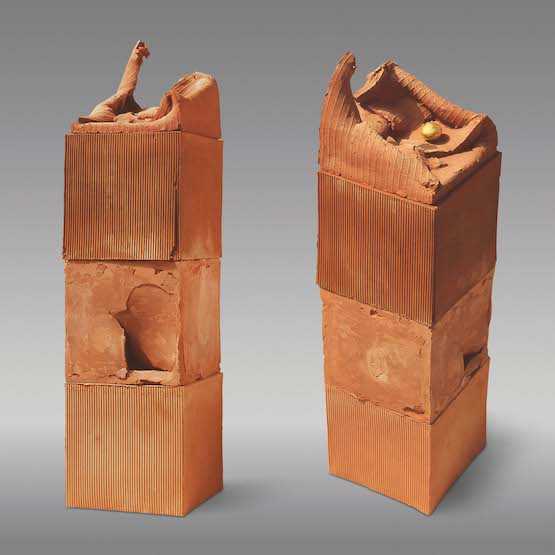Kiran Nadar
Image: Kiran Nadar, Chairperson, Kiran Nadar Museum of Art. Courtesy Kiran Nadar Museum of Art.
Image: Kiran Nadar, Chairperson, Kiran Nadar Museum of Art. Courtesy Kiran Nadar Museum of Art.
In 2010 avid art collector, Kiran Nadar, founded India's first private museum dedicated exclusively to exhibiting modern and contemporary works. Located in the heart of New Delhi, the Kiran Nadar Museum of Art's ever growing collection highlights a magnificent generation of 20th century Indian artists from the post-independence generation, but it equally engages the different art practices of the younger contemporaries too.
Most recently the KNMA collaborated with The Metropolitan Museum of Art and the Museo Nacional Centro de Arte Reina Sofía to open an exhibition dedicated to the modernist artist, Nasreen Mohamedi (1937–1990). Nasreen Mohamedi (18 March–5 June 2016) is the smaller and more intimate of two exhibitions to inaugurate the hotly anticipated opening of The Met Breuer in New York.
It presents a survey of Mohamedi's exceptional drawings, photographs, paintings and collages, with a focus on the artist's work throughout the 1970s. Known for her singular and sustained engagement with abstraction, and her independent vision of Minimalism, the exhibition is being heralded as an important step towards fulfilling The Met's promised goal to broaden its contemporary and modern art programme.
In this Ocula Conversation, art collector Kiran Nadar shares how she moved from collecting for her home, to building a private art museum. She also discusses her passion for Nasreen Mohamedi's work, and the museum's current exhibition of work by Himmat Shah.
ADYou started collecting art as a hobby, but it clearly was a passionate pastime that morphed into something more serious which has ultimately led you to open India's first private museum dedicated to modern and contemporary art. Can you discuss this transition from collecting for your personal collection to deciding to build a private museum?
KNWell I did start collecting for my home and at some point we had enough works to fill the house, so I started putting works into my husband's office and soon we ran out of space there too. And then I needed to put works into storage, and at some point I realised that just putting work into storage and not seeing them didn't seem to make much sense. So I thought of putting up a museum.
I didn't even know what it entailed, it was just a thought in my head. I didn't realise the commitment and work that would be required.So I started to think about the idea of a private museum about four or five years before I put that idea into reality. And during this period (before we began to build the museum) my commitment to collecting increased. It went beyond being about collecting because I was fond of art, to really becoming very focused on collecting to fill gaps in the collection.
ADCan you expand on what you mean by 'filling gaps'?
KNEarlier on I was collecting really to fill my house, buying works because I liked them. But then, with the idea of a museum in mind, I started to want to fill historical gaps in the collection. I wanted to ensure we were collecting important work.
ADThere's an interesting debate that surrounds the concept of 'private museums'; it relates to the risk that the 'taste' of private individuals will come to define the art of our time. How do you view this risk?
KNI have curators who are helping me with the collection, but I do still rely a lot on my own eye. But I have also become learned (if that is the right word), and my art historical knowledge has grown with my passion for collecting. To this end, I do feel I have a good idea of the importance of various artists, including artists who perhaps have not received the critical attention they should have within the art world, and within specific art historical trajectories. I feel I have sufficient knowledge to understand the breadth of particular artist's practices, and because of this I am able to recognise where gaps arise that need to be addressed.
ADThe Met Breuer is about to host a major exhibition dedicated to the art of Nasreen Mohamedi. This exhibition was organised as a result of a collaboration between The Met, The Museo Nacional Centro de Arte Reina Sofía and the Kiran Nadar Museum of Art. Tell me about how you first came across Nasreen Mohamedi's work?
KNWell I knew of her work in a basic way, although I didn't have any great knowledge. Then a group of her works was offered to me, and I was taken by the work. I decided that this was an artist I wanted to pursue in depth. That was five or six years ago, and from then I started collecting her work seriously.
I thought of having a retrospective dedicated to her work about two years ago, because at that point nobody had given her such a show. So we did, and we had 140 odd works, some of which were part of our collection, but many also were loaned by various collectors. It was a fabulous show. It got noted by a lot of people, including by the curators from the Reina Sofía and The Met. So, in our [Kiran Nadar Museum of Art] little history, it was a very monumental show.
ADAnd from organising the retrospective at your museum, how did this develop into The Met Breuer show?
KNWell it developed really from discussions with Manuel Borja-Villel [director] of the Reina Sofía. Manuela saw the show and then spoke to us, and said he would like to exhibit the show at the Reina Sofía, and that he also wanted to discuss it with The Met. And so we discussed it with The Met, and Sheena Wagstaff [Chairman of the Department of Modern and Contemporary Art at The Metropolitan Museum of Art] was very excited about the idea of showing the exhibition in New York. And so from this we showed the exhibition first at the Reina Sofía and now it is at The Met.
ADNasreen's practice can be broken up into three specific categories. From her early sketches, to her linear drawings to her later photographs. Is there a particular part of her practice that you most connect with?
KNHer early work is figurative to some extent. Then there is her linear works, and then her photographs. Her photographs, I think, are quite extraordinary. I am interested by all of her work, but it is her linear work and her photographs that I particularly enjoy.
ADOutside of her artistic contribution, Nasreen had a fascinating personal history. She travelled extensively, and perhaps at a time when it wasn't common for women to travel so extensively as she did.
KNYes, she was a great traveller. She also developed a particular illness quite early in her career. It was an illness akin to Parkinson's disease and it impacted the motion of her hands, but she still managed to continue to create her work until she died. Bearing her illness in mind, the detailing and precision in her work is quite amazing. She worked tirelessly and she continued her craft—it must have been very difficult to work through that physical trauma.
ADHow do you view The Met's decision to open The Met Breuer with a show dedicated to Nasreen Mohamedi in the context of 'shaking up' art historical narratives?
KNI think it's a fascinating step to see an institution like The Met focusing on art originating from Asia. To open up such a major building as The Met Breuer with an exhibition dedicated to an Indian artist ... well, it's a huge step. I think we will now see a lot more artists from different countries being promoted and shown. I think that's a major step for The Met. It's a major step for Indian art too.
ADIs there any other particular artist you feel passionately has yet to receive their due, and whose work is deserving of the type of institutional showing that Nasreen's work is currently receiving at The Met?
KNThere are a lot of artists in the Indian context who deserve a retrospective at The Met, but it's early days and we have to see how The Met progresses their journey with Indian art. I'm sure we could have discussions with them. I don't want, off the top of my head, to talk about any particular artist, as such. But there are lots.
I can tell you what has really excited me recently though: the retrospective we have on at the [Kiran Nadar] museum dedicated to the work of Himmat Shah.
ADTell me more about why you think he is important?
KNHe made an extraordinary contribution to the discourse of modern Indian art. Working on this retrospective was a real eye-opener for me. The exhibition presents around 300 works, with 215 coming from the museum's collection. Other works were loaned from various public and private institutions and collections.
He really was one of the early modern sculptors to work with terracotta and the exhibition includes a number of his terracotta sculptures, which are quite fascinating. He also worked in bronze. We have a large collection of his terracotta works, and some in bronze. In addition, along with his famous terracotta sculptures, bronzes, and drawings, the exhibition also explores his lesser-known mediums, including high-relief murals, burnt paper collages and silver paintings.
ADTell me about the silver paintings?
KNHis silver paintings are really quite fascinating. They are textured... it is very difficult to describe these works in words because they are so sensitively and beautifully defined.
ADYou have had the museum now for over six years—over this time have you noticed the museum's audience change?
KNYes, definitely. A lot of the art world is especially interested in the museum. We get a lot of interest from the arts community, but our audience is increasingly extending beyond this. We have to work to grow our audience. We have an 'Outreach' programme, and part of this, for example, includes working with schools. Art education is a priority for the museum and for that purpose, talks are led by curators in order to enable activity, discussion and learning. We have an average of two schools visit a week.
The level of interest has certainly gone up. —[O]

